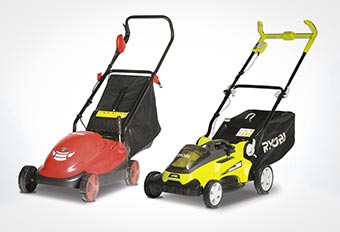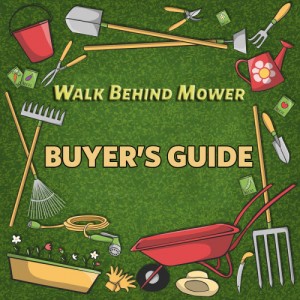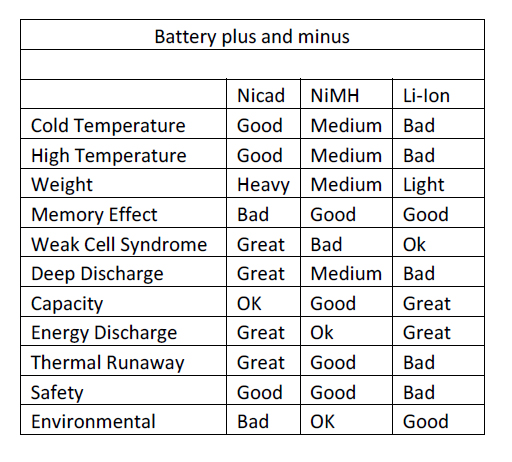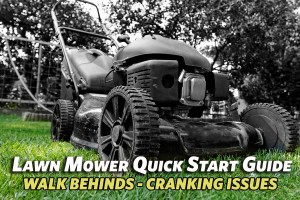Best Rated 5 Cordless Lawn Mower Reviews
Only the best of the best make it in my TOP 5 cordless lawn mower reviews listing, so check them out. You won´t find any better! For detailed information about the differences between corded and cordless electric mowers, please click here.
SEE ALL CORDLESS ELECTRIC MOWER REVIEWS
What is a Cordless Lawn Mower?
 About a decade ago when Li-ion batteries were first developed for defense application, lawn mower manufacturers never envisioned an age where a large push mower could be powered by a relatively small and light battery, rivaling the more traditional gas mower.
About a decade ago when Li-ion batteries were first developed for defense application, lawn mower manufacturers never envisioned an age where a large push mower could be powered by a relatively small and light battery, rivaling the more traditional gas mower.
A cordless mower is typically an electric mower that is stripped off the circuitry necessary to draw power from the domestic grid and replaced with a large rechargeable battery and accompanying protective grid that charges and discharges this battery. The battery in turn powers a motor to drive the blades along a vertical axis or in a cylinder to cut through grass. In other words, an electric corded mower with a big battery transforms into a cordless mower.
Depending on the battery used and the motor power, resistance of the circuit, useful application time of the mower will vary. Obviously larger the battery, better the power output, longer the mower operates. Unlike electric mowers, the operation time matters a lot since the output voltage in a rechargeable battery drops as it discharges until a point where it falls beneath the minimum requirement to power the motor.
Why Buy A Cordless Lawn Mower?
No Fuel, No Gas, No pollution
Cordless lawn mowers only need a fully charged battery to operate making them portable by design. Carry an extra charged battery pack and switch it out when you begin to feel the blade’s resistance against the grass increasing. Typically two packs of batteries ought to get you through 1/3 acre with ease.
Super Silent
Electric corded mowers make a low frequency hum, gas mowers have an annoying rhythmic beat but cordless mowers make absolutely no noise other than the motor running. Enjoy mowing your lawn without having to deal with any kind of noise.
Lightweight
Without the battery, cordless lawn mowers weigh less than 50 pounds and with the battery pack it weighs under 80 pounds making them the lightest of the lot.
Zero Maintenance
Other than following battery care instructions and annually sharpening the blades, cordless mowers need no other kind of maintenance.
Long Life
The only two components that need to be eventually repaired or replaced are the battery and blade arrangement. Keep these two in perfect condition and your mower will serve you for life.
Rechargeable Batteries Used in Electric Lawn Mowers
In order to evaluate battery types, you will need to understand the following terms.
Power Density – The energy density or concentration of energy per unit of battery. Usually measured in Watthour/Kilogram or Wh/kg.
Cycle Life – Number of times the battery can undergo charging and discharging before falling below 80% of initial capacity. Usually given as a whole number such as 300 cycles.
Fast Charge Time – The time it takes to charge to over 80% of power capacity. Measured in hours ranging from 1 Hour to 24 Hours.
Cell Voltage – A single AA cell output in Volts.
Cost per Cycle – The cost of owning the battery including maintenance over its entire lifespan divided by cycle life. Measured in US$.
Bet you, when electric mowers were first introduced, you probably would never have believed robo-mowers would ever exist!
Which Battery Is Best?
Nickle-Cadmium (NiCd)
- Cheap, yet strong batteries that withstand rigorous conditions without failing
- Need to be fully discharged before recharging if not tend to lose power density
Nickle-Metal Hydride (NiMH)
- Eco-fiendly
- Good power density
- Tend to discharge rather quick
- Battery life depends heavily on use intensity
Lead-Acid (PbA)
- Retain charge very good
- Inexpensive purchase cost
- Not suitable for power tools like lawn mowers due to low power density
Lithium Ion (Li-ion)
- High power density and electrochemical potential
- Safety issues
- Deterioration in charge capacity over time
Handy Overview to Choose Your Battery for Your Cordless Mower

Every battery type has its own advantages and disadvantages and cordless mowers today use all of these types. Li-ion and Ni-Cd are the two most popular choices for power tools and while some feel the former has a more consistent performance, others appreciate the longer cycle life of Ni-Cd batteries. To learn more on rechargeable batteries you can try batteryuniversity.
How to Find the Best Cordless Lawn Mower Reviews
To determine if an electric mower deserves to get a place among the highest rated electric mowers, not everything has to be that technical. I think the best cordless lawn mower therefore is one that is easy to use, has a long battery life, good cut quality and is properly priced. Here are some questions I ask myself when I decide on the best cordless lawn mowers reviews…
Ease of Use
How easy is the cordless mower to use? Where is the battery situated and can it be quickly changed? Is the handle foldable for easy storage? How light is the mower and can it be tilted to clean the deck’s underside, sharpen the blades? How about first time assembly – is it simple or complicated? These are a few of the questions I aim to answer on this criteria
Cut Quality
Can the mower just graze the ground for a perfect zero cut? How does it fair on uneven terrain with regards to maintaining cut quality? Will it handle tougher strains of grass with equal ease?
Height Adjustment
Cheap mowers tend to have one or two height adjustments, what you need is one with multiple heights. Moreover, does the mower use a single lever for all wheels or is each wheel treated independently?
Maintenance
What about Maintenance? How do you charge and discharge the batteries for optimal life? When do you have to change the batteries? Are there any motor related repairs needed in a year’s time? I will answer all maintenance and warranty related questions in this section.
Motor Power/ Battery
Unlike a corded mower, where the total output of the motor determines the RPM (rotations per minute) or speed of the blade, with cordless mowers, the battery type, capacity and motor power together determine the torque, power and ultimately RPM of the blade.
Cost Effectiveness
Just because a cordless mower has a large battery, a big motor and a high price does not make it the best of the lot. Manufacturers have to justify addition of features by setting an appropriate price and this is what I aim to unravel here. Is the mower appropriately priced for its feature set and performance? What about continued expenses such as annual maintenance, replacement of batteries and re-sharpening of the blades?
Comment And Share Please…
Got something to say? Maybe a suggestion or a bug you want to report on this page? Help me make better cordless lawn mower reviews by leaving a comment below. Also, do share this page with others using the share links below and spread the word.






 Did you know that the first rechargeable battery was the Lead-Acid type developed way back in 1859? Then came the first commercially viable rechargeable battery, Nickle-Cadmium made in 1950 – big and bulky then but over time it slimmed down to an extent where you will find them in AA, AAA, D and C type stick batteries. The question then is, which battery types are suitable for lawn mowers?
Did you know that the first rechargeable battery was the Lead-Acid type developed way back in 1859? Then came the first commercially viable rechargeable battery, Nickle-Cadmium made in 1950 – big and bulky then but over time it slimmed down to an extent where you will find them in AA, AAA, D and C type stick batteries. The question then is, which battery types are suitable for lawn mowers?

